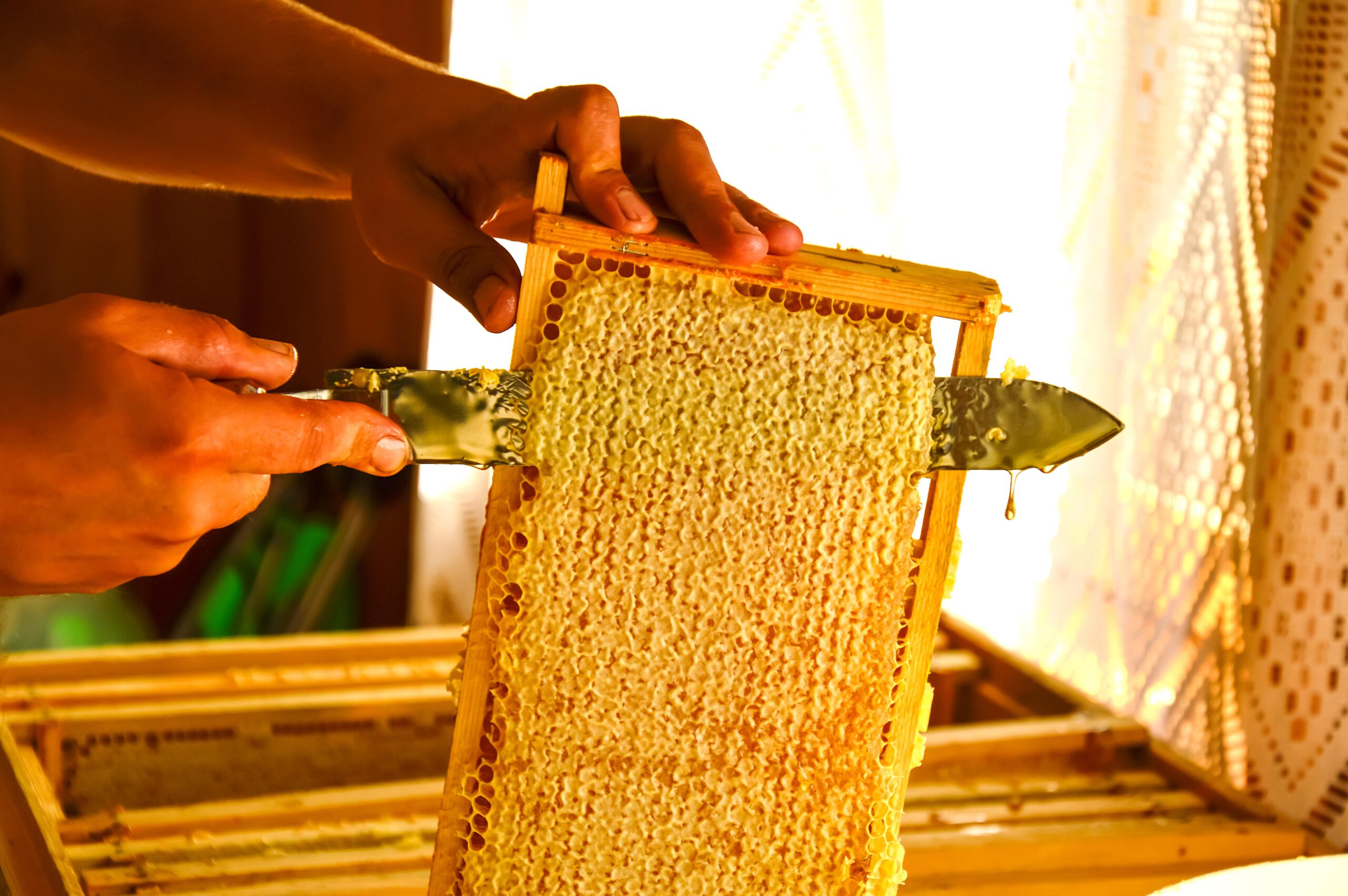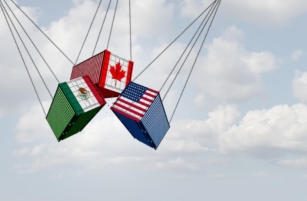Insight Focus
- Honey demand in the US has continued to grow in the last decade.
- Domestic suppliers are struggling to keep their bees alive due to extreme heat.
- As a result, US honey imports have hit an all-time high.
The US is the second largest honey consumer in the world behind China. Domestic honey consumption has continued to increase as consumers move towards organic and non-chemical sweeteners. However, the US has not been able to keep up with this increase in demand. US honey production hit an all-time low in 2021, as producers struggled to keep their bees alive because of extreme heat. Looking at this year, the weather is not looking any better for the bees as the largest honey-producing states are being hit by extreme heat and heatwaves during the summer. As a result, the US will have to increase imports to keep up with demand.
US Honey Demand Peaks
The US’ honey demand has continued to grow over time, peaking in 2021. This trend is expected to continue.
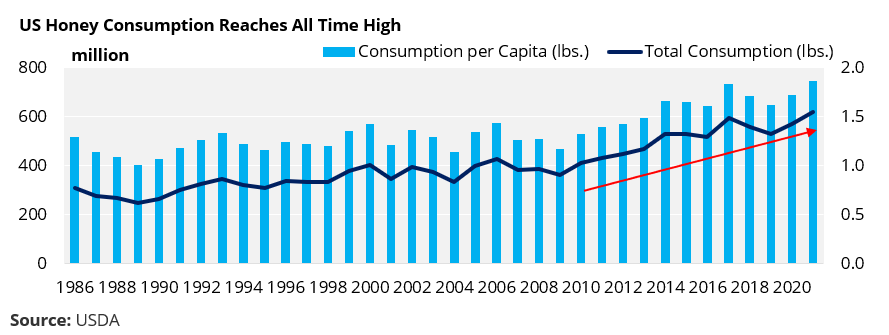
Despite, consumption increasing, honey production in the US hit an all-time low which led to a significant increase in imports.
US Honey Production Hits Record Low in 2021
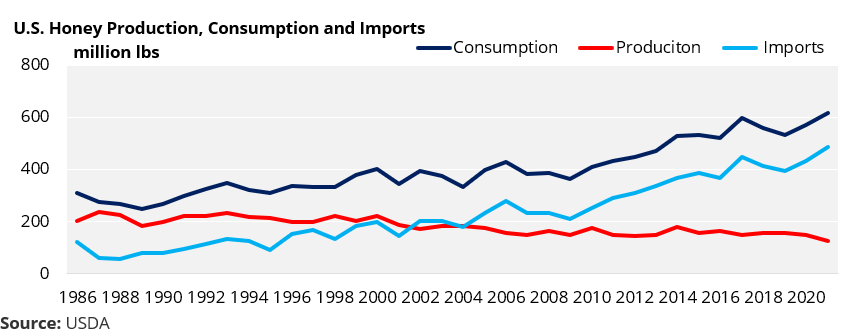
US honey production has wilted as the major honey producing states grappled with extreme heat and widespread drought in key honeybee foraging grounds in 2020. Bee colonies, struggle to survive in the heat and with a decrease in floral resources available to make honey beekeepers struggled to maintain high production and yields.
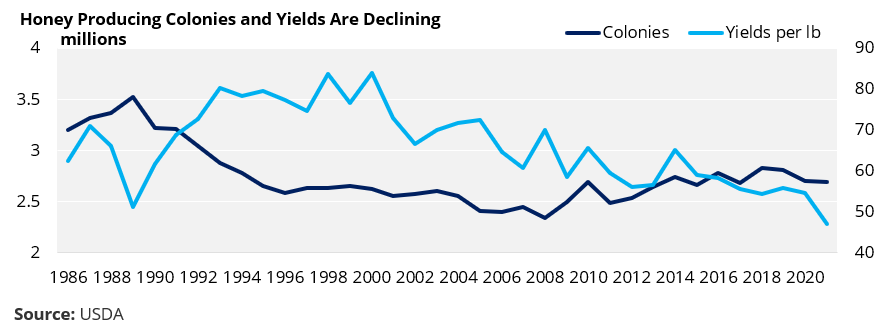
As a result, the number of bee colonies in the US has fallen sharply since 2014, this trend is expected to continue. In addition to the number of colonies shrinking, output per colony has also decreased. The top five honey producing states in the US are North Dakota, California, South Dakota, Florida, Montana. These states experienced extreme heat last year and their honey production plummeted.
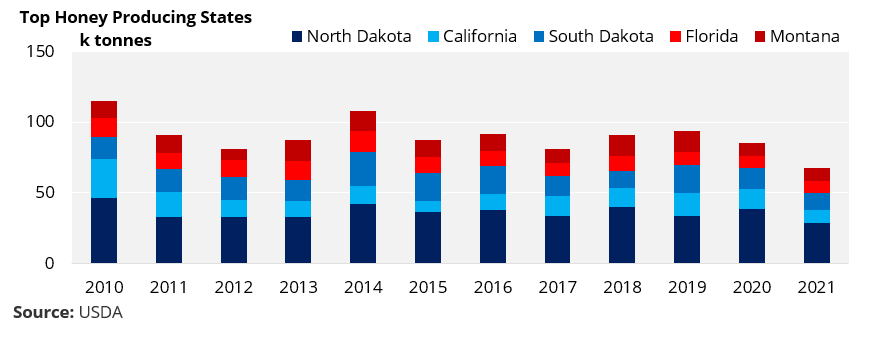
The weather in 2022, is not expected to help the situation as the US has experienced multiple heatwaves and record high temperatures in June. The weather forecasts for July, are showing temperatures continuing to increase, which does not bode well for honey production.

Burgeoning Imports
As a result, the US will have to increase imports to keep up with demand. The US imports most of its honey from India, Vietnam, Argentina and Brazil, which account for 86% of imports.
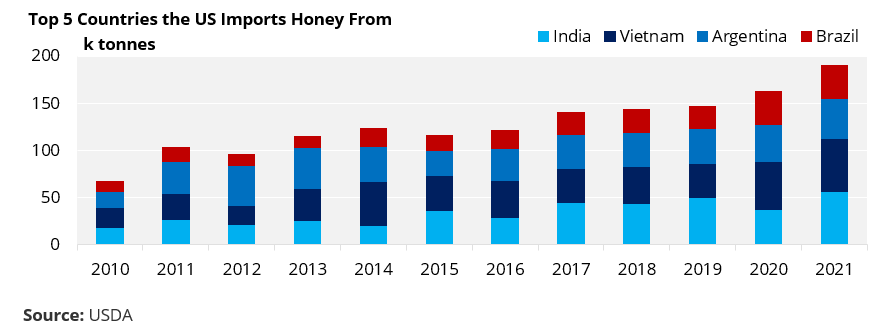
However, the US has experienced problems with the quality for the honey that is being imported. Some of the honey that is being imported is not 100% raw honey but a mixture of honey and other syrups (high-fructose corn syrup, sugar, or rice syrup). This mix makes the production and price of honey cheaper. The US has also found small amounts of toxins (lead) and antibiotics (chloramphenicol) in some of the honey that has been imported, specially from Asia, which can appear in honey if they are used at any point in the production process. As a result the US International Trade Comission filed Antidumping Duty Orders on imports of this product from Argentina, Brazil, India, and Vietnam in 2021.
In May of last year, the US launched the anti-dumping campaign to investigate honey production in India, Brazil, Argentina, and Vietnam. This investigation is to ensure that the imported honey has no added sweeteners. This is a concern for these countries as a big part of their honey production goes to the US. However, this should not be a problem and there should still be imports from these countries as they are all expecting high honey production in 2022.
Is the US running out of honey?
US honey production is not expected to recover any time soon due to increasing temperatures. The US honey price is also increasing, reflecting higher production costs.
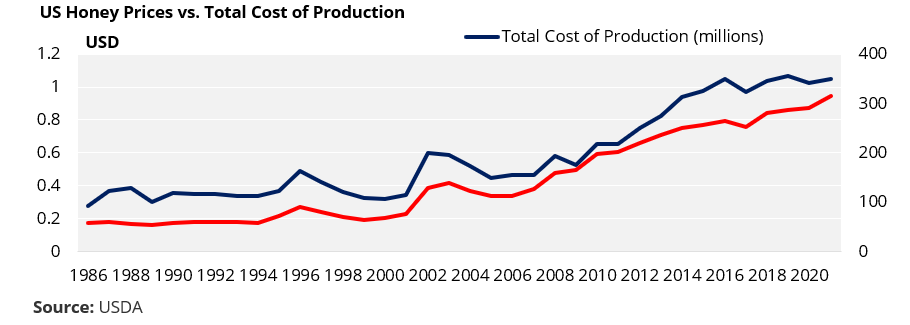
Climate change means there is little chance of US honey production keeping up with demand. This will mean imports will remain high or even grow. However, imports could bring with them problems of quality and undercutting on price of an already battered domestic industry.
Other Insights That May Be of Interest…
Have US Organic Food Sales Peaked?
What Might Extreme Heat Mean for US Corn Production?
Explainers That May Be of Interest…
